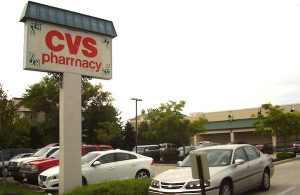
CVS’s business model determines how generic strategies and intensive growth strategies develop the business organization’s competitive advantages. The company’s business model pertains to two main types of operations: retail pharmacy stores and managed services for healthcare. In terms of business design and corporate strategic objectives, and considering Michael E. Porter’s model of strategies for competitive advantage, CVS’s generic competitive strategy focuses on costs, and the corresponding value proposition focuses on customers’ healthcare-related expenses. For example, sales cost reduction is part of the company’s generic strategy implementation in filling prescriptions. On the other hand, based on Igor Ansoff’s matrix, CVS’s intensive growth strategies maximize economies of scale. Economies of scale are essential in cost minimization for the corporation’s intensive strategies for its pharmacies and healthcare services. CVS’s business administration minimizes costs within the business model, through applicable intensive growth strategies and generic strategies for competitive advantage, while addressing competition in the United States healthcare and retail industries.
The competitive advantages of CVS Health Corporation and its subsidiaries, such as CVS Pharmacy and CVS Caremark, are developed when the enterprise’s generic strategy and organizational resources and capabilities are used in the business model. However, the company needs to maximize its business model effectiveness in developing competitiveness against major competitors like Rite Aid, Express Scripts, and Walgreens. CVS’s generic competitive strategy and intensive growth strategies and related objectives address challenges in the competitive landscape.
CVS’s Business Model & Design
CVS Health’s business model design involves retail pharmacy operations and healthcare service operations that are coupled to achieve competitive advantages linked to the company’s generic strategy. Based on the two main categories of business models, the company has a pipeline business model, in which the enterprise transforms inputs into outputs in a generally sequential manner, with customers benefitting from outputs like medicines, consumer goods, and healthcare services. In the pipeline business model category, there are many specific company strategies and designs, which in this case are based on the operations of the subsidiaries or divisions that represent CVS’s organizational structure. The corporation applies its generic strategies for competitive advantage through different business models for its retail pharmacy operations and healthcare service operations. In terms of specific business strategies and design, CVS’s operations use the following business models:
- Pharmacy Benefit Management business model
- Click and Mortar (Bricks and Clicks) business model
Pharmacy Benefit Management Business Model. The business operations of CVS Health Corporation, particularly CVS Caremark, are of a pharmacy benefit management business model, which is also known as the prescription benefit management or PBM business model. The PBM business model is a form of the supply chain managed services business model, wherein the company manages the supply chain of pharmaceutical products, to apply generic strategies and achieve low-cost competitive advantages and operational effectiveness that benefit customers. CVS achieves this cost effectiveness by aggregating the bargaining power of customers (organizations, employers, and consumers/patients) against suppliers (pharmaceutical companies). The company profits by retaining a percentage of the cost savings. CVS’s generic strategy determines how cost effectiveness and competitive advantages are achieved for stakeholders. The PBM business model requires effective intensive growth strategies to maintain a strong competitive position based on bargaining power.
Click-and-Mortar Business Model. CVS Health Corporation uses the click-and-mortar business model (also known as the bricks-and-clicks company model) in operating its websites along with its physical locations. For example, the company combines its traditional pharmacy stores and CVS Pharmacy’s e-commerce website. Despite competition, this business model has the benefit of market reach maximization, which aligns with the company’s cost-based generic strategy for competitive advantage, and supports intensive strategies for growth in the retail pharmacy and healthcare industries. The company’s model optimizes convenience and product (service) value through online technologies that increase operational effectiveness and efficiencies for CVS’s generic strategy for competitive advantage.
CVS’s Generic Competitive Strategy and Intensive Growth Strategies
Generic Strategy for Competitive Advantage. CVS mainly uses the cost leadership generic strategy to achieve competitive advantage by minimizing costs associated with retail pharmacies, formulary management, and healthcare services. The corporation’s business plan includes reasonable pricing via strategic positioning as a best-cost provider in the retail pharmacy market. This generic strategy ensures low cost for consumers’ healthcare needs, and for competitive advantage that helps fulfill CVS Health’s corporate mission and vision statements. Other generic competitive strategies, such as differentiation and focus strategies, are partially implemented in the company’s efforts to make its products competitive in terms of convenience, branding, and other variables. These generic strategies affect how operations are developed and competitively positioned, while the aforementioned business models determine how CVS Health Corporation’s value chain is structured, and how the company’s VRIO/VRIN resources and capabilities are utilized for competitive advantage. The cost leadership generic strategy influences how the intensive growth strategies are prioritized in the retail pharmacy and healthcare operations.
Intensive Strategies for Growth. CVS’s main intensive growth strategy is market penetration, which aims to maximize the company’s reach and customer base in the healthcare and retail pharmacy markets. The company’s thousands of retail pharmacy stores and MinuteClinic locations throughout the United States are a reflection of this intensive strategy. The large number of CVS pharmacies maximizes the company’s active customer population to optimize economies of scale for the cost savings value proposition. The cost leadership generic strategy keeps the business model’s effectiveness and the competitive advantages for growing the company’s retail pharmacies and healthcare services. Market penetration relies on the core competencies and business strengths discussed in the SWOT analysis of CVS Health Corporation.
To lesser extents, CVS uses other intensive growth strategies together with the cost leadership generic strategy for competitive advantage. The intensive strategies of product development, market development, and diversification are occasionally applied in CVS’s operations. For example, online pharmacy services and delivery services are a form of product development. CVS Health Corporation’s organizational culture contributes to products’ competitive advantage through human resource support for product development. Using the cost leadership generic strategy, the market development intensive growth strategy is applied when the company expands its current business operations into new healthcare or retail pharmacy markets. However, because CVS is already present throughout the United States, this intensive strategy has minimal application for business growth, unless the corporation expands into other countries, such as when the company acquired the current Brazilian subsidiary Drogaria Onofre. On the other hand, the diversification intensive growth strategy is rarely used. CVS’s business model sets the operational requirements when generic strategies are implemented, and the cost leadership generic competitive strategy supports competitive advantage as the organization grows and expands its market reach.
Strategic Implications of CVS’s Business Model, Generic Strategy, and Intensive Strategies for Growth
CVS’s intensive growth strategies and generic strategy ensure the success of the enterprise’s business models. The market penetration intensive strategy determines the retail pharmacy and healthcare company’s economies of scale, which support the cost leadership generic competitive strategy, which in turn is necessary in the PBM business model. Other intensive growth strategies contribute to CVS’s competitive advantages and strategic positioning, although the business mainly depends on market penetration. In this situation, the company’s generic strategy and intensive growth strategies and tactics deliver value to consumers and profitability to the business in an interconnected way. In this system and organizational design, the revenue models, organizational development, business plans, business strategies, and strategic plans must interconnect with CVS’s business model, generic strategy, and intensive growth strategies to maintain cost-based competitive advantages.
References
- Acar, A. Z., & Acar, P. (2012). The effects of organizational culture and innovativeness on business performance in healthcare industry. Procedia-Social and Behavioral Sciences, 58, 683-692.
- Allen, R. S., & Helms, M. M. (2006). Linking strategic practices and organizational performance to Porter’s generic strategies. Business Process Management Journal, 12(4), 433-454.
- Chesbrough, H. (2010). Business model innovation: Opportunities and barriers. Long Range Planning, 43(2-3), 354-363.
- CVS Health Announces 2018 Formulary Management Strategy.
- CVS Health Corporation’s Annual Report to the U.S. Securities and Exchange Commission.
- CVS Pharmacy’s E-commerce Website.
- Hussain, S., Khattak, J., Rizwan, A., & Latif, A. (2014). Interactive effects of Ansoff growth strategies and market environment on firm’s growth. British Journal of Business and Management Research, 1(2), 68-78.
- International Trade Administration of the U.S. Department of Commerce – The Retail Services Industry in the United States.
- Jambulingam, T., Kathuria, R., & Doucette, W. R. (2005). Entrepreneurial orientation as a basis for classification within a service industry: The case of retail pharmacy industry. Journal of Operations Management, 23(1), 23-42.
- Jones, G. R. (2013). Organizational theory, design, and change. Upper Saddle River, NJ: Pearson.
- Ormanidhi, O., & Stringa, O. (2008). Porter’s model of generic competitive strategies. Business Economics, 43(3), 55-64.
- Slywotzky, A. J., Morrison, D. J., & Andelman, B. (2007). The profit zone: How strategic business design will lead you to tomorrow’s profits. Crown Business.
